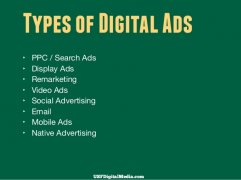Compared to other ad types, search has a relatively straightforward set of performance metrics based around clicks, conversions and raising brand awareness. The medium is mostly unchanging; advertisers are paying a search engine to promote their digital content above their competitors based on keywords. The important metrics are as follows:
- Quality Score is Google’s metric for search campaign performance that is given as a score out of 10. This score determines the position and price of a PPC search ad. The score is based on expected CTR, Landing Page Experience and Ad relevance (relevance of copy/keywords)
- Impressions are a key metric for search campaigns. Advertisers want to be seen ranking at the top of a search for keywords in their industry, impressions from search generate awareness and website traffic leading to leads and conversions.
- Click-Through Rate, much like impressions, will always be an important metric for search advertising. Measuring click-through enables the advertiser to see the percentage of users that have actively engaged with the ad.
- Average CPC allows the advertiser to gauge the return of their campaign with regards to cost. This metric is transferable to other types of digital advertising. If the advertiser is looking to drive traffic to their homepage they can take this metric and compare it to other campaign types to gauge effectiveness.
Every search ad is made up of the same components, a title tag, a URL and a meta description, therefore, campaign goals tend to be relatively constant from advertiser to advertiser. Other search performance metrics include conversion rate, cost per conversion, wasted spend, cost and CPA.
As the ad tech landscape grows new ad formats enter the marketplace, these ads will soon grace the screens of new devices on your wrist, in your self-driving car and on your fridge. With all these new ways to reach the consumer, brands hunt for an accurate way to measure campaigns, but, despite the vast quantity of data available, it still remains extremely difficult to gauge an accurate measure of performance. Currently, brand-based metric tracking is challenging, as soon as the user goes offline a brand no longer has the capacity to track user activity.










